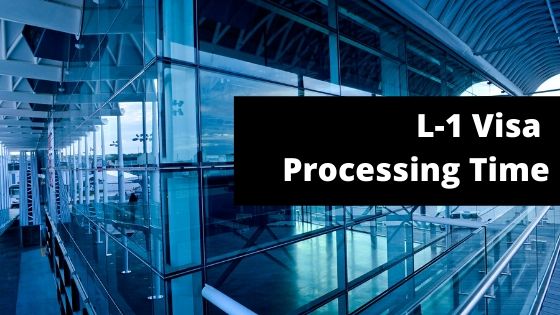For multinational employers who are looking to transfer their high-ranking employees to branches and offices to the U.S., there simply is no better visa class than the L-1 visa. However, many companies of that caliber run along well-defined lines. The sporadic and flexible methods of immigration law may not fit well into those lines. If you are wondering what you can account for when it comes to the L-1 processing time, then you’ve come to the right place.
What is the L-1 Visa Processing Time?
Before we can know what the overall processing time is, we must first break down what each step of the L-1 visa process entails. Fortunately, the L-1 process is relatively simple compared to some of the other visa classes. Here are the steps:
- Firstly, if you are a foreign professional working for a multinational company, you need to have been working at that company as either an executive, manager, or employee with specialized knowledge for at least one year in the three years leading up to your L-1 visa petition. Your employer will be responsible for the fees that go along with your petition.
- If you fulfill the above requirement, then your employer can file an I-129 petition on your behalf with the USCIS. Each service center has a varying workload that will have an impact on the L-1 processing time of your petition. On the whole, the average processing time is around six months.
- Once your petition is approved, you will need to go through consular processing if you are currently outside of the U.S. This involves going to a U.S. consulate or embassy in your home country to go through an interview with a consular officer and apply for your visa. Visit the consular website for more information about your specific consulate L-1 visa processing time.
It is important to note that the L-1A visa for executives and managers and the L-1B visa for employees with specialized knowledge both require the I-129 petition. Therefore there will be no difference between the L-1 visa processing time for each subcategory.
All in all, the entire L-1 process can take between six months to one year depending on the consulate or embassy that you visit for your interview and application.
Can Premium Processing Help?
Fortunately, the USCIS provides a special service called premium processing that reduces the usual six-month processing time for I-129 petitions to a mere 15 calendar days for an additional fee of $1,225. If the USCIS fails to process your petition in that time, then your employer will be refunded the premium processing fee.
The USCIS recently announced that it would be suspending premium processing for all H1B visas for up to six months. However, this does not apply to L-1 visa petitions. As of this post, premium processing will continue to be available for all I-129 forms filed for L-1 visas.
USCIS Request for Evidence
If the USCIS finds a discrepancy or an inconsistency in your information, then they may send you a Request for Evidence (RFE) rather than an outright denial. While receiving an RFE means that your L-1 processing time will be delayed, it can be viewed as an opportunity to clarify your case with the USCIS.
The first step is to consult with your immigration attorney. If you have been going it alone thus far, then you will need an expert’s help now more than ever. Work with your attorney to analyze the USCIS’s RFE and determine what the best strategy would be to address each issue brought up.
Here are some common reasons for why the USCIS might issue you, the employer, an RFE:
- You did not submit an L-1 business plan to the USCIS with your petition detailing the structure of your company and your growth projections for the future.
- The managerial or executive position that you described does not match the normal duties typical to those positions in your industry.
- The L-1B employee does not seem to possess enough specialized knowledge of the company’s operations to warrant a visa.
- Your company seems unable to financially support a new office or you seem otherwise unable to properly compensate the L-1 employee.
L-1 Extension Processing Time
An L-1 visa is initially valid for a period of 3 years. After that, an L-1A visa holder is eligible for an extension for a total of 7 years while an L-1B visa holder can be extended to a maximum of 5 years.
To get this extension, you essentially need to re-petition for an L-1 visa. This means that you will need to wait through the normal L-1 visa processing time if you do not opt for premium processing.
If you have elected to spend some time overseas during your L-1 visa validation period, you may be able to recapture that time and use it to extend your L-1 visa further than the maximum. All you would need to do is have official proof that you left the country such as boarding passes or plane tickets.
 Shilpa Malik
Shilpa Malik  Boris Ignachkov
Boris Ignachkov 